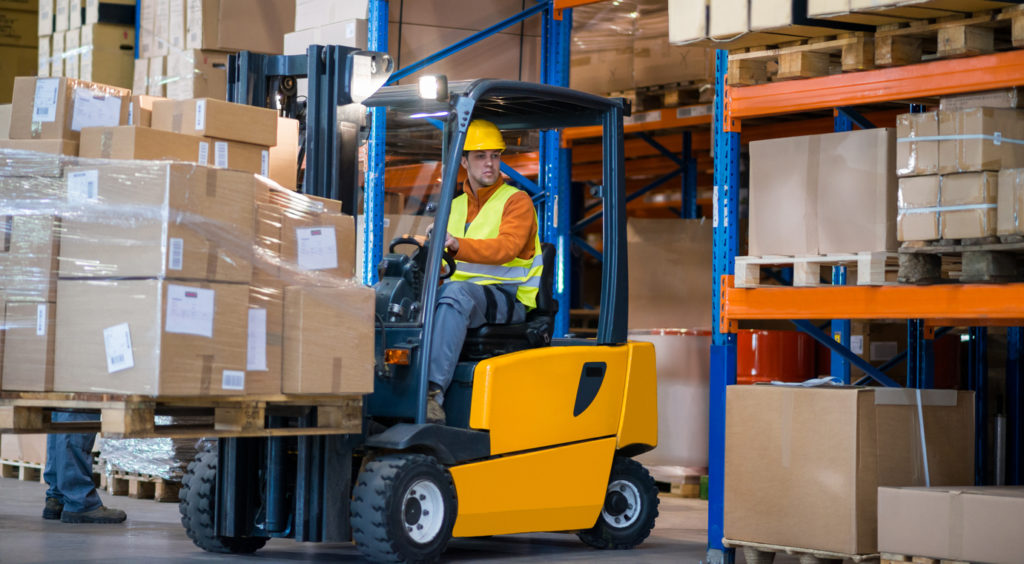Forklift Load Capacity, Stability, and Loading Tips for Safer Operations
Posted by: admin on March 15, 2025
Forklift accidents often happen because of improper load handling. Misjudging forklift load capacity, ignoring safe lifting procedures, or failing to secure loads can lead to serious accidents and costly OSHA violations. Knowing how to create a stable load keeps your operations safe, efficient, and fully compliant with OSHA standards.

Why Forklift Load Safety Matters
Every year, unstable forklift loads cause preventable injuries and fatalities. OSHA reports that load-related accidents are among the top causes of forklift incidents, frequently involving overturned machines. Common mistakes include loading damaged pallets, exceeding load limits, or lifting unstable materials. Businesses that prioritize forklift load safety reduce accident risks, minimize damage, and improve productivity across the board.
Understanding Forklift Load Capacity
Forklift load capacity refers to the maximum weight a forklift can safely lift and transport under specific conditions. Always check the forklift data plate to find the rated load capacity and center point measurements. Manufacturer guidelines must be followed, as exceeding these limits destabilizes the lift and increases the risk of tipping. When dealing with unusual loads, consult your supervisor or the forklift’s manual for capacity adjustments based on load shape and center shift.
How to Load a Forklift Safely: Step-by-Step Guide
- Inspect the Load: Examine pallets and materials for damage before lifting.
- Center the Load: Place the weight evenly between the forks to maintain balance.
- Keep the Heaviest Part Forward: Position the heaviest section closest to the front wheels.
- Secure Unstable Loads: Band or wrap loose items to prevent shifting during transport.
- Position Forks Properly: Level forks before lifting and insert them fully under the load.
Forklift Load Stability Tips
- Tilt the Mast Backward: Keeping the mast slightly tilted backward adds load stability while moving.
- Travel With Load Low: Transport loads close to the ground to maintain a low center of gravity.
- Avoid Sharp Turns: Take wide, gradual turns to prevent tipping, especially with high loads.
- Check Overhead Clearance: Always verify overhead space before lifting or stacking.
Forklift Load Handling in Special Situations
- Off-Center Loads: Arrange so the heaviest part faces the carriage and proceed with extreme caution.
- Trailer Loading: Confirm trailer stability and clearance before entering. Secure loads firmly to prevent shifting during transport.
- Slippery or Uneven Surfaces: Reduce speed and adjust fork height as necessary to maintain traction and balance.
OSHA Guidelines for Forklift Loading
OSHA’s 29 CFR 1910.178 regulations emphasize load stability, proper capacity use, and safe driving practices. Operators must understand center of gravity principles, including the “stability triangle,” to maintain control. Daily inspections should include fork condition, mast function, and tire integrity before handling any load.
Forklift Load FAQs
How High Should a Load Be Carried on a Forklift?
Carry loads just above the floor, approximately 4 to 6 inches off the ground, except during stacking or unstacking activities.
Where Should the Load Center Be Located on the Forks?
The load center should be evenly distributed between the two forks and aligned as close to the backrest as possible.
How Do You Safely Pick Up Heavy Loads with a Forklift?
Approach slowly, square up to the load, insert forks fully, center the load, tilt the mast back slightly, and lift smoothly without sudden movements.
Load Safer, Work Smarter with CertifyMe
CertifyMe delivers OSHA-compliant forklift certification programs that teach safe loading practices, stability techniques, and proper load handling procedures. Our online courses are fast, flexible, and accessible 24/7, empowering workers to earn certification and renew it every three years at no additional cost. Equip your team to move loads safely and confidently with CertifyMe today.
Welcome to CertifyMe.net
CertifyMe.net has offered online forklift certification since 1999. With Our Convenient online program. your employess can earn their certification in an hour or less.
Browse Online Certifications:
This low-cost program can be compeleted anytime, anywhere!






